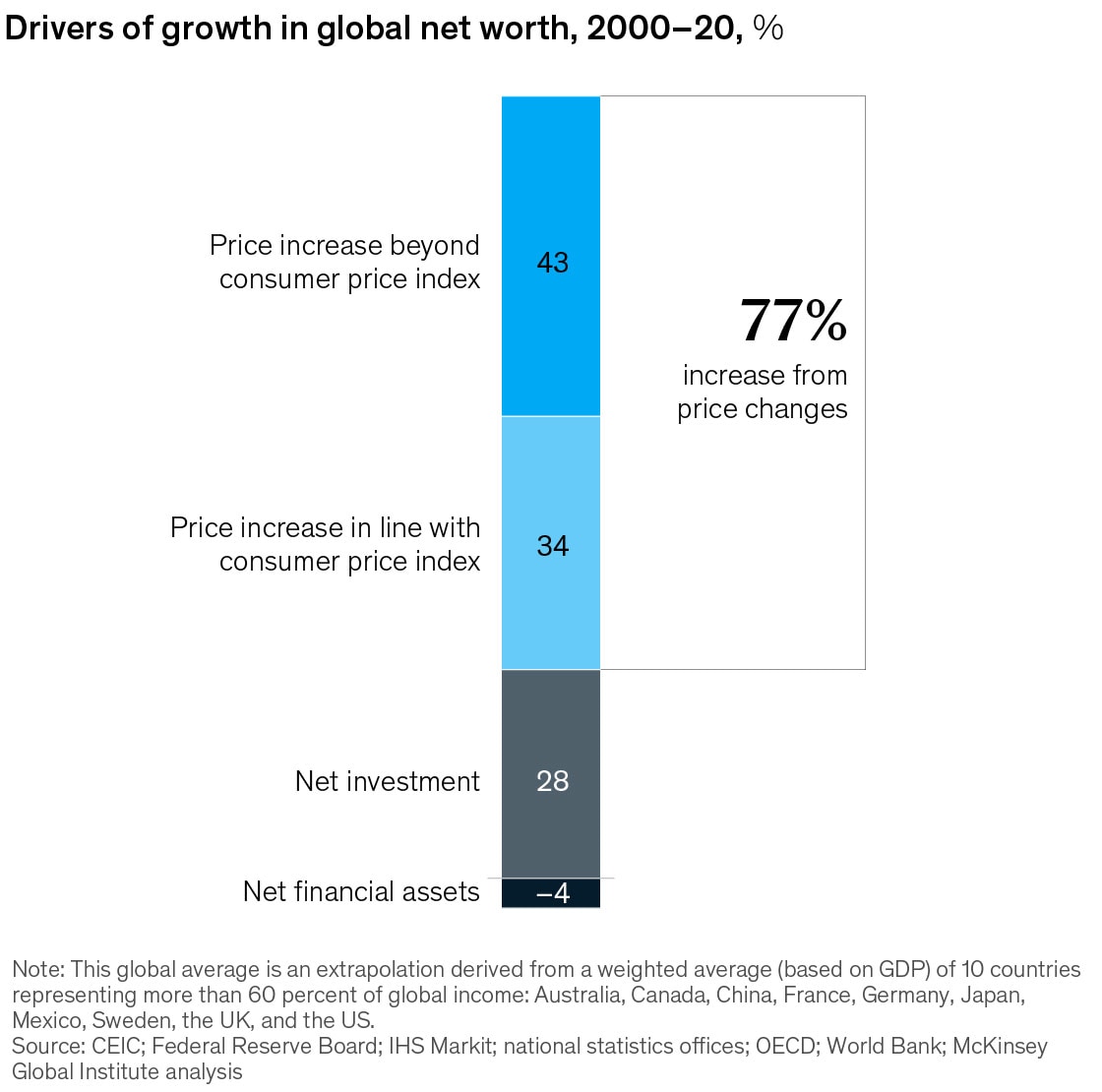.
| DELIVERING ON DIVERSITY, GENDER EQUALITY, AND INCLUSION | | | In this issue, we look at broadband equity in America—particularly for members of tribal nations—and at what’s been driving the rapid growth in global net worth over the past two decades. | | | | This week, for the first time in five years, the White House Tribal Nations Summit was held—and for the first time ever, the event was hosted (virtually) at the White House. The two-day summit, which took place during National Native American Heritage Month, offered a forum for nation-to-nation dialogue among hundreds of tribal leaders, the US president, and senior American officials, including Interior Secretary Deb Haaland. Among the key issues discussed: digital equity. Earlier this year, FCC chair (then-commissioner) Jessica Rosenworcel put it plainly: throughout the country, “There are people sitting in parking lots using free Wi-Fi signals because they have no other way to get online.” | | This McKinsey interactive offers a look at broadband access across the United States, highlighting the limited availability of affordable broadband on tribal lands and in Indigenous communities. For example, in Oglala Lakota County, South Dakota, where citizens of the Oglala Lakota Nation make up about 90 percent of the population, only one-third of all households have fixed, high-speed internet. In Apache County, Arizona, where Native Americans—including members of the Navajo, White Mountain Apache, and Zuni tribes—account for nearly three-quarters of the population, only a quarter of households have broadband. That’s compared with nearly 70 percent of American households. | | The $1 trillion infrastructure bill signed into law on Monday marks the United States’ single-largest investment in tribal infrastructure, including an additional $2 billion for the Tribal Broadband Connectivity Program, which is aimed at boosting broadband access and affordability on tribal lands. The goal is for all Americans, including tribal citizens, to be able to use broadband at home—not in parking lots located miles away. | | | Global net worth has tripled over the past two decades, in large part due to rising real-estate values. A recent analysis by the McKinsey Global Institute shows that in ten countries representing more than 60 percent of global income, rising prices of real assets accounted for more than three-quarters of the increase in net worth between 2000 and 2020. Less than 30 percent of the growth in net worth over this period was driven by savings and investment. | | Some implications: The dynamic of wealth accumulation mostly from asset price gains means that wealth concentration may intensify. Net worth has been highly concentrated among a small portion of households for a long time. Under current trends, those owning assets will see real valuation gains while those without assets will have difficulty purchasing more expensive assets, unless incomes grow at a faster rate than asset prices. | | A question: Is it healthy for the economy that high house prices rather than investment in productive assets are the engine of growth, and that wealth is mostly built from price increases on existing wealth? | | Some ideas: Decision makers could redirect capital to productive investment, including in digital infrastructure, mobility, affordable housing, and the green economy. |  | | — Edited by Julia Arnous, an editor in McKinsey’s Boston office | | | | This email contains information about McKinsey’s research, insights, services, or events. By opening our emails or clicking on links, you agree to our use of cookies and web tracking technology. For more information on how we use and protect your information, please review our privacy policy. | | You received this email because you subscribed to the Intersection newsletter. | | Copyright © 2021 | McKinsey & Company, 3 World Trade Center, 175 Greenwich Street, New York, NY 10007 | | | |
| |


No comments:
Post a Comment